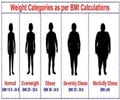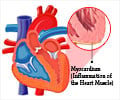Photon-counting computed tomography (PCCT) is a new advanced imaging technique that is going to transform the standard clinical use in heart disease patients.

‘A new CT technology called Photon-counting CT is beneficial in providing a non-invasive method to detect heart disease in high-risk patients. #heart disease #angiography #coronary heart disease’





Unfortunately, CCTA in a high-risk population is difficult due to the high prevalence of coronary calcifications and stents. Coronary calcifications tend to “bloom” on CCTA, making them appear more extensive than they are. This results in an overestimation of blockages and plaque and false-positive results.Ultra-high-resolution coronary CT angiography (UHR-CCTA) (1✔ ✔Trusted Source
Coronary Computed Tomography Angiography From Clinical Uses to Emerging Technologies: JACC State-of-the-Art Review
Go to source) is a promising tool for the noninvasive assessment of patients at high risk for coronary artery disease. Because it uses recently introduced photon-counting CT scanners, it has not been extensively studied.
Hence, researchers compared the diagnostic accuracy of UHR-CCTA with that of the reference standard of invasive coronary angiography (ICA) in 68 patients. The patients had severe aortic valve stenosis, a common serious valve disease that reduces or blocks blood flow from the heart to the aorta.
Photon-Counting CT is the Beginning of a New Generation of Cardiac Imaging
UHR-CCTA was highly sensitive and specific for coronary artery disease detection. It delivered a median overall image quality score of 1.5 on the 5-point Likert scale, where 1 is excellent and 5 is non-diagnostic. Almost 80% of segments are rated as good or excellent.It appears that the spectrum of patients benefiting from undergoing non-invasive CCTA has been significantly broadened by photon-counting detector technology. This is excellent news for these patients and the imaging community.
The high resolution of UHR-CCTA (2✔ ✔Trusted Source
Photon-Counting Computed Tomography (PCCT): Technical Background and Cardio-Vascular Applications
Go to source) results from a greater number of emitted photons. This also increases radiation exposure compared with conventional CT scanners. However, the technology is at a very early stage, and researchers are developing methods to reduce the amount of radiation exposure.
Advertisement
The researchers are exploring the diagnostic ability of photon-counting CT technology in other clinical scenarios such as oncological imaging (3✔ ✔Trusted Source
Ultra-high resolution photon-counting coronary CT angiography improves coronary stenosis quantification over a wide range of heart rates - A dynamic phantom study
Go to source). In the field of cardiac imaging, they are expanding their research to include subgroups for whom CT imaging is currently not feasible, such as patients with coronary stents.
Advertisement
References:
- Coronary Computed Tomography Angiography From Clinical Uses to Emerging Technologies: JACC State-of-the-Art Review - (https://www.sciencedirect.com/science/article/pii/S0735109720359659?via%3Dihub)
- Photon-Counting Computed Tomography (PCCT): Technical Background and Cardio-Vascular Applications - (https://www.mdpi.com/2075-4418/13/4/645)
- Ultra-high resolution photon-counting coronary CT angiography improves coronary stenosis quantification over a wide range of heart rates – A dynamic phantom study - (https://www.ejradiology.com/article/S0720-048X(23)00060-8/fulltext)
Source-Eurekalert















